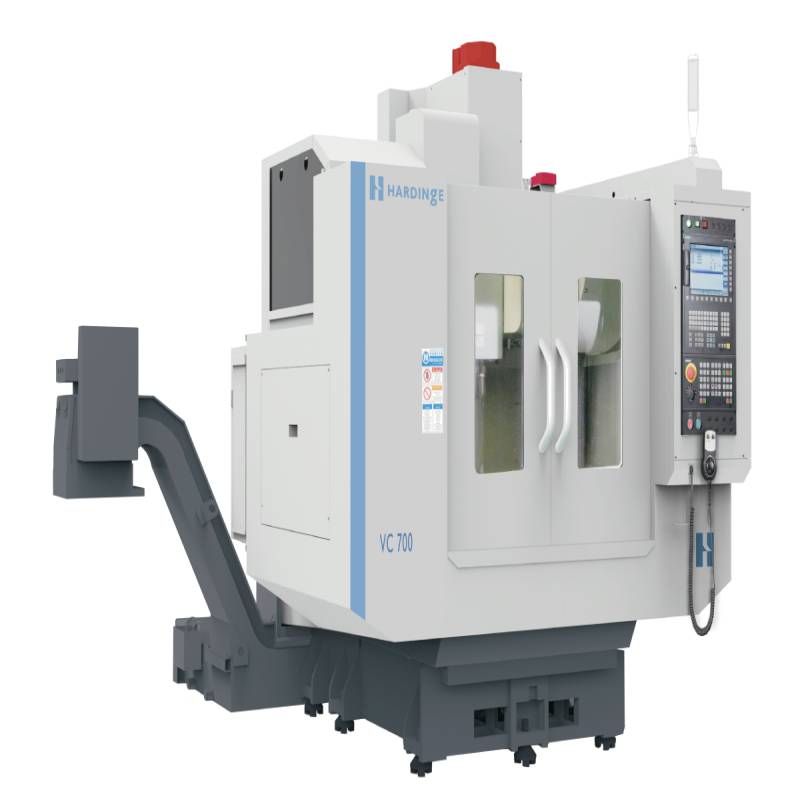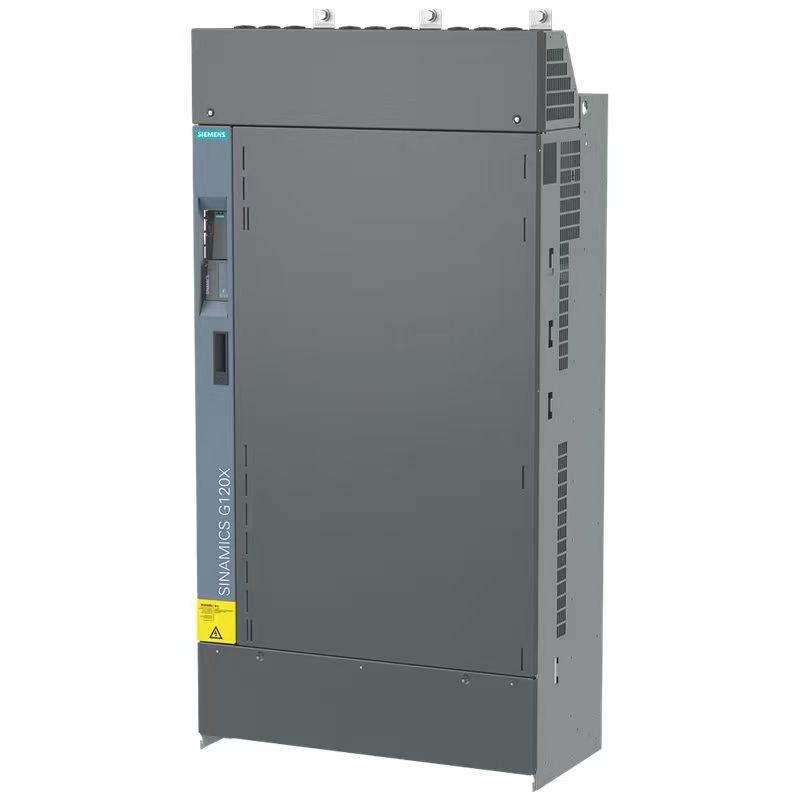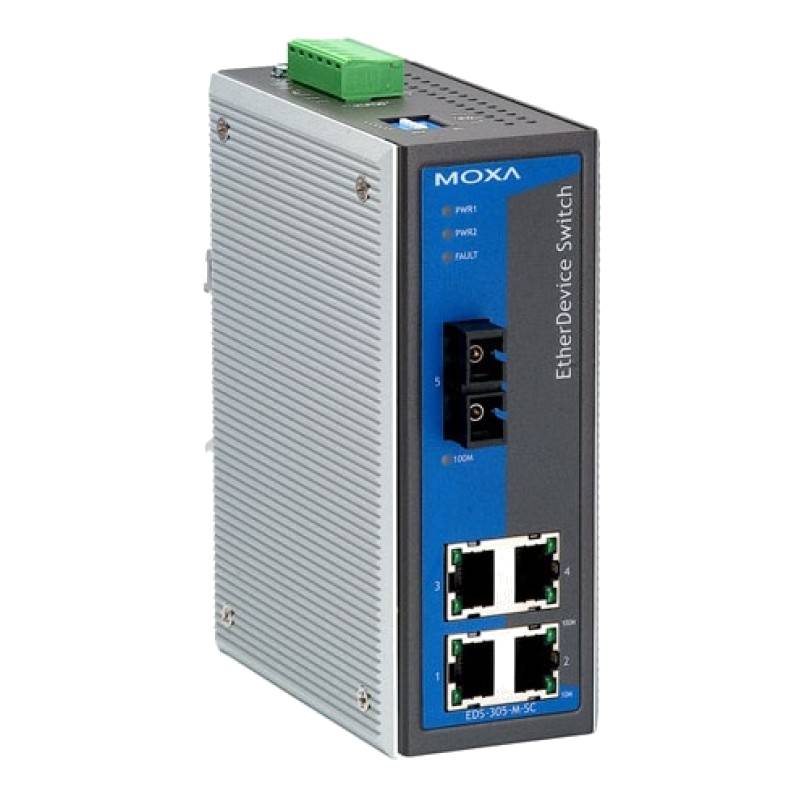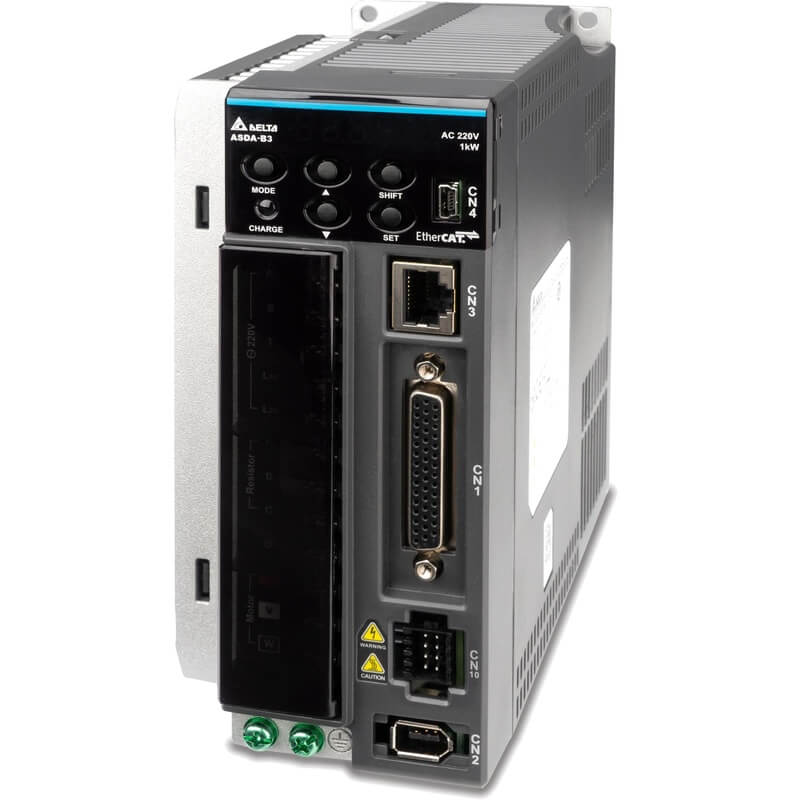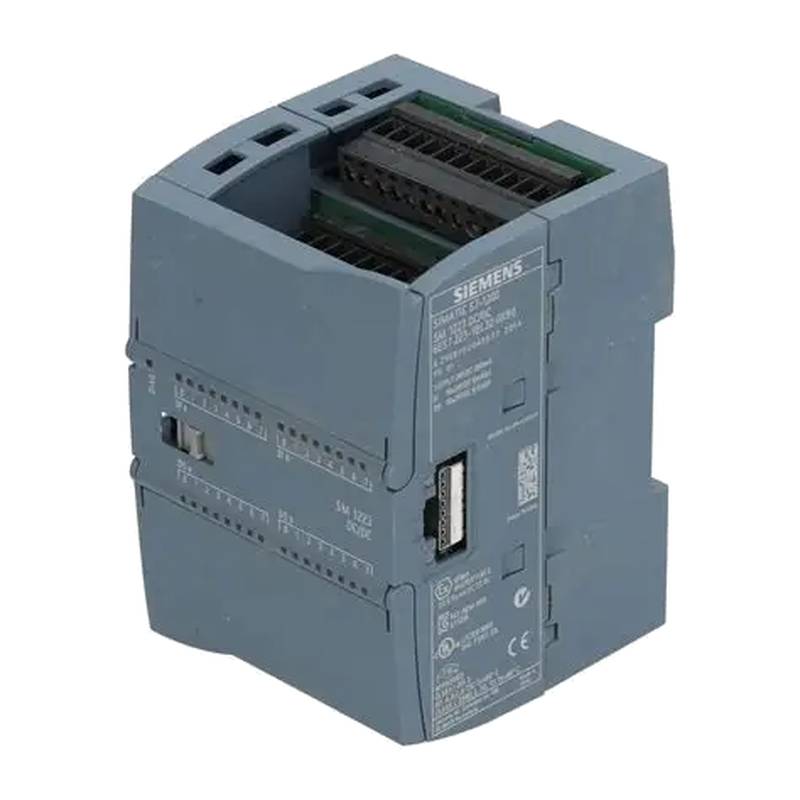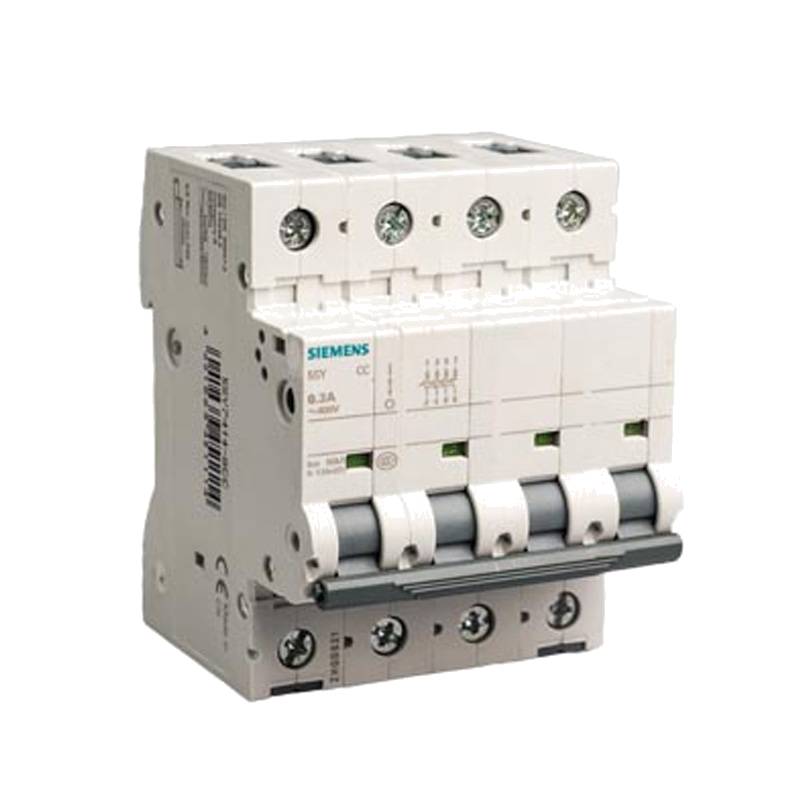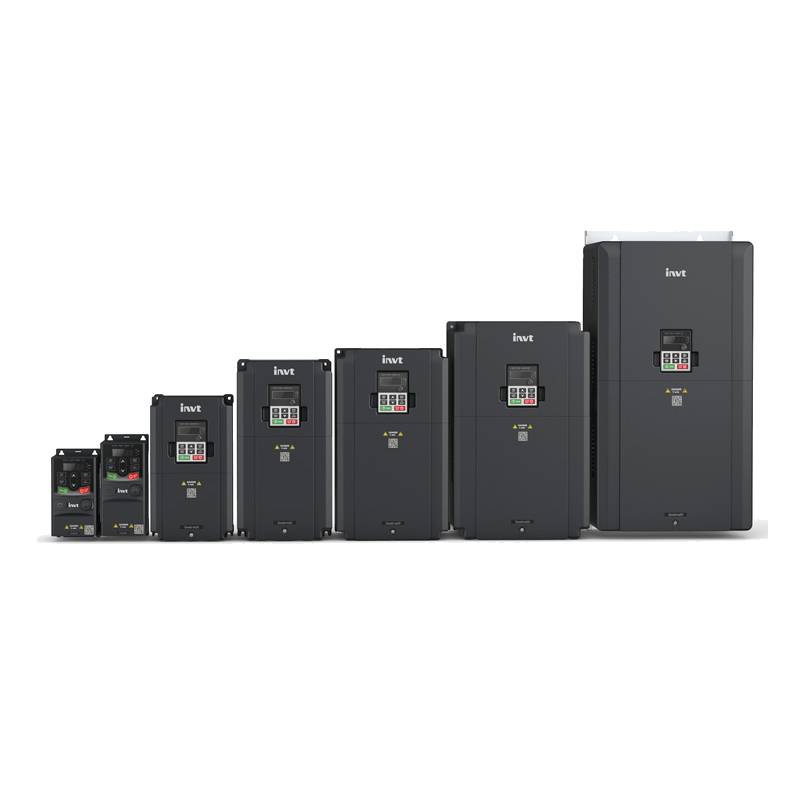
The HARDINGE VC1600 Heavy-Duty Vertical CNC Machining Center stands as a robust solution for demanding manufacturing operations, offering exceptional precision, reliability, and productivity. Engineered for complex part production, this vertical machining center excels with its superior rigidity, advanced control systems, and versatile capabilities. Key technical parameters include an X-axis travel of 1600 mm, Y-axis travel of 800 mm, and Z-axis travel of 600 mm, accommodating a wide range of workpiece sizes. Its high-speed spindle, capable of reaching 10,000 RPM, combined with rapid traverse rates of up to 20 m/min, significantly reduces cycle times. The machine's powerful 22 kW spindle motor ensures efficient material removal even with challenging alloys.
| Parameter | Specification |
| :-------------------- | :------------------- |
| X-Axis Travel | 1600 mm |
| Y-Axis Travel | 800 mm |
| Z-Axis Travel | 600 mm |
| Spindle Speed | 10,000 RPM |
| Spindle Motor Power | 22 kW |
| Rapid Traverse Rate | 20 m/min |
| Table Load Capacity | 2000 kg |
| Tool Magazine Capacity| 30 tools |
| Control System | FANUC 0i-MF Plus |
Core Features & Market Positioning
The HARDINGE VC1600 is strategically positioned as a high-performance VMC solution for industries prioritizing efficiency and accuracy. Its market advantage lies in its robust construction, featuring a heavy-duty cast iron base and column for superior vibration damping and thermal stability, crucial for maintaining tight tolerances. The integration of a high-precision FANUC 0i-MF Plus control system offers intuitive operation and advanced machining capabilities, allowing for complex contouring and high-speed machining. Compared to competitors, the VC1600 differentiates itself through its exceptional table load capacity of 2000 kg, enabling the machining of larger and heavier components without compromising stability or accuracy. Industry reviews frequently highlight its reliability and ease of maintenance, further solidifying its position as a workhorse in demanding production environments.
Key Application Scenarios
This heavy-duty VMC is ideally suited for sectors requiring precise and efficient machining of complex parts. It is extensively utilized in the aerospace industry for producing critical components with stringent dimensional requirements. The automotive sector benefits from its high throughput capabilities in manufacturing engine blocks, transmission parts, and chassis components. Furthermore, the mold and die industry finds the HARDINGE VC1600 invaluable for creating intricate tooling with excellent surface finishes. Its versatility extends to general precision machining, job shops, and the production of high-value industrial equipment where accuracy and repeatability are paramount.
Practical System Integration Guidance
Successful integration of the HARDINGE VC1600 into a production facility involves careful planning. Ensuring a stable, level foundation is critical; the machine should be installed on a reinforced concrete floor with adequate vibration isolation. Electrical connections require a dedicated power supply meeting the machine's voltage and amperage requirements, with proper grounding to prevent electrical interference. For programming, the FANUC 0i-MF Plus control supports various G-code and M-code formats, and users can leverage CAM software for generating toolpaths. Initial setup includes a thorough calibration of axes and spindle alignment to guarantee optimal performance.
Operation and Risk Mitigation
Operating the HARDINGE VC1600 necessitates adherence to strict safety protocols. All personnel must undergo comprehensive training on machine operation, emergency stop procedures, and the use of personal protective equipment (PPE). Common troubleshooting issues often relate to tool wear, workpiece fixturing, or coolant system maintenance; regular inspections and preventative maintenance schedules are essential. Critical error codes, such as those related to servo drive faults or axis limit switches, should be addressed promptly by qualified technicians. A robust preventative maintenance program, including lubrication checks and filter replacements, significantly minimizes operational risks and downtime.
Scalability & Long-Term Value
The HARDINGE VC1600 is designed with future production demands in mind, offering excellent scalability and long-term value. Its robust architecture supports the integration of advanced probing systems for in-process measurement and quality control, enhancing automation. Compatibility with various fixturing solutions allows for adapting to evolving workpiece designs and production volumes. As industries move towards Industry 4.0, the VC1600 can be integrated with IIoT platforms for real-time monitoring, predictive maintenance, and remote diagnostics, optimizing Overall Equipment Effectiveness (OEE). The machine's durable construction and proven performance ensure a significant return on investment through consistent, high-quality output over its operational lifespan.
Frequently Asked Questions (FAQs)
What are the primary industries that benefit from the HARDINGE VC1600?
Aerospace manufacturers rely on its precision for critical flight components. Automotive suppliers utilize its high-speed capabilities for mass-produced engine and chassis parts. It is also vital for mold and die makers requiring intricate detail and surface finish.
What material types can the HARDINGE VC1600 effectively machine?
This VMC excels with a wide array of materials, including various steels, aluminum alloys, and titanium. Its powerful spindle and rigid construction allow for efficient machining of tougher, high-strength alloys. It can also handle softer metals and plastics with appropriate tooling.
How does the FANUC 0i-MF Plus control system enhance machine performance?
The FANUC 0i-MF Plus offers advanced motion control for complex curves and surfaces. It provides intuitive user interfaces, simplifying programming and operation for skilled machinists. This control system ensures high repeatability and precise execution of machining programs.
What are the critical installation requirements for the HARDINGE VC1600?
A solid, level foundation, typically reinforced concrete, is essential for stability. Ensure adequate electrical supply with proper grounding to prevent interference. Clearances around the machine are necessary for maintenance access and safe operation.
How can I ensure optimal performance and longevity of my VC1600?
Implement a strict preventative maintenance schedule, including regular lubrication and filter changes. Train operators thoroughly on safe and efficient operating procedures. Address any error codes or unusual noises immediately with qualified technicians.
What are common troubleshooting steps for machining inaccuracies?
First, verify workpiece fixturing and ensure it is rigid and correctly positioned. Check tool wear and condition; replace dull or damaged tools. Calibrate axes and spindle to confirm machine accuracy and alignment.
Can the HARDINGE VC1600 be integrated into automated production lines?
Yes, its robust design supports integration with robotic loading systems and automated pallet changers. It can be networked with other machines and supervisory systems for advanced workflow management. This enables lights-out manufacturing and increased production efficiency.
What are the safety features of the HARDINGE VC1600?
The machine is equipped with interlocked doors and emergency stop buttons for immediate shutdown. It includes safety guarding to contain chips and coolant splashes. Comprehensive operator training on safety protocols is paramount.
How does the table load capacity impact its application?
A high table load capacity of 2000 kg allows for machining of larger, heavier workpieces. This reduces the need for specialized lifting equipment and complex setups. It ensures machine stability even when processing substantial materials.
What is the advantage of its heavy-duty construction?
The heavy-duty cast iron structure provides superior rigidity and damping of vibrations. This results in higher accuracy and better surface finishes. It also contributes to the machine's overall durability and extended service life.














